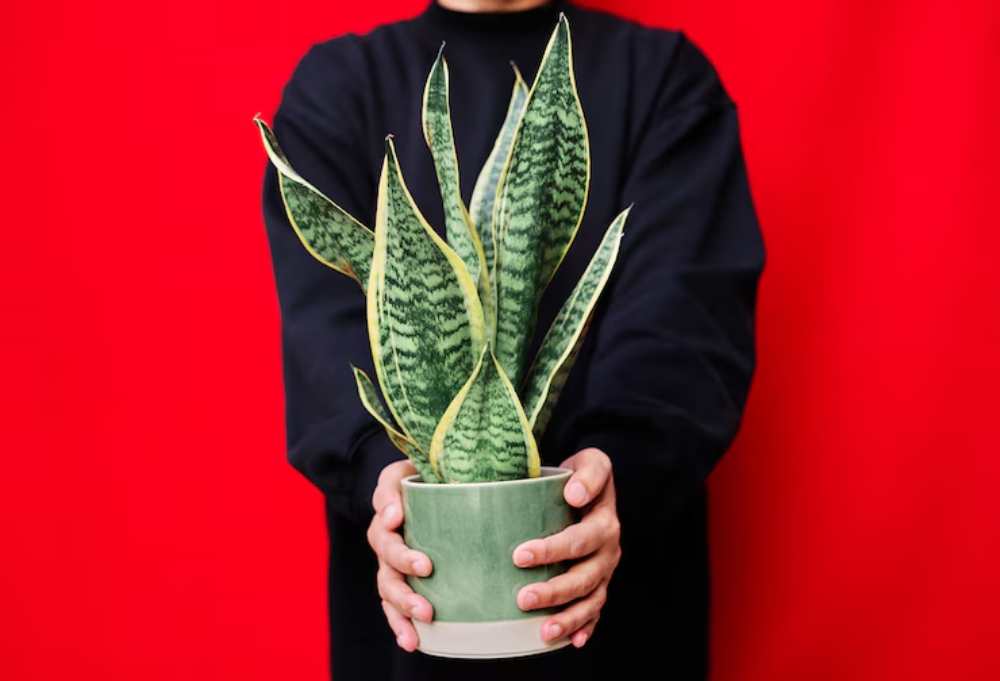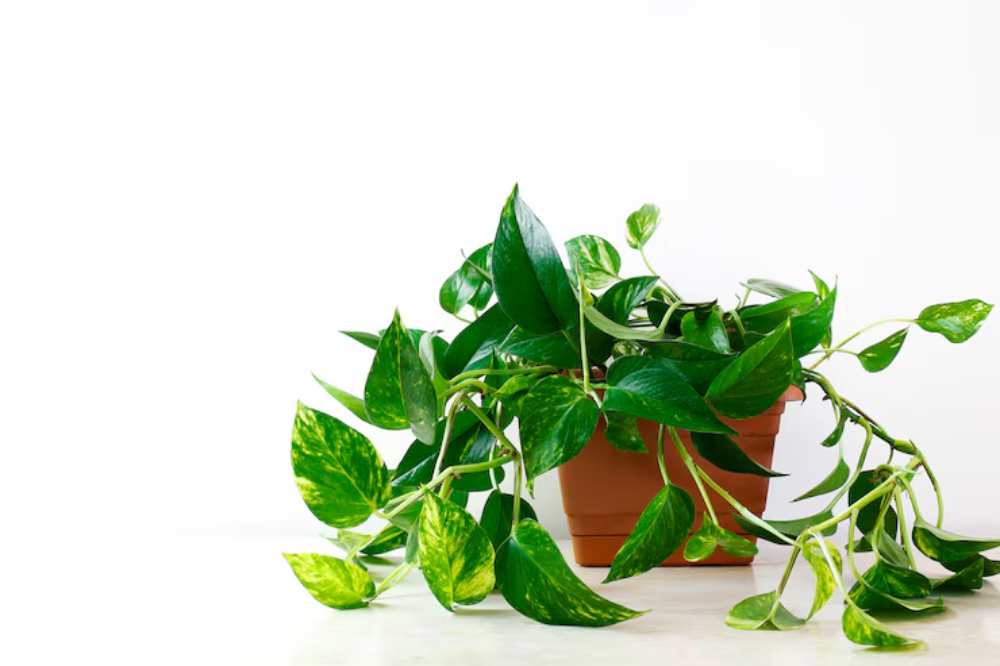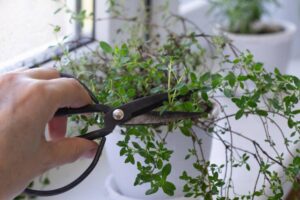The Interior Blog

Easiest Indoor Plants to Style (Even Without a Green Thumb)
You love the look of lush interiors filled with plants, but your track record with greenery isn’t exactly thriving. Maybe you’ve overwatered a succulent. Maybe your last peace lily is, well… no longer at peace.
Don’t worry. You’re not alone.
Many of us dream of stylish, plant-filled spaces but worry we’re not cut out for the care routines. The good news? You don’t need a green thumb to enjoy beautiful, low-maintenance greenery. With the right beginner indoor plants, you can achieve that lush, calming look without constant upkeep.
This guide is your friendly nudge into the world of easy houseplants — including styling tips, care advice, and room-by-room ideas for every home.
Why start with easy houseplants?
It’s tempting to go straight for dramatic showpieces like a fiddle leaf fig. But if you’re just starting out, simpler is smarter.
Here’s why:
- They forgive mistakes — Overwatered once? Missed a feed? No problem.
- They adapt well — Happy in a range of light and humidity conditions.
- They’re stylish too — Easy doesn’t mean boring. Many are design favourites.
- They build confidence — Every thriving plant boosts your plant-parent self-esteem.
So, where should you begin?
1. Snake Plant (Sansevieria): The unkillable classic

Why it’s perfect for beginners: If you forget to water it for a week (or three), the snake plant won’t hold a grudge. With upright, sword-like leaves in a range of greens and patterns, it looks both modern and sculptural.
Care essentials:
- Low to bright indirect light
- Water every 2–3 weeks
- Wipe leaves occasionally to keep them glossy
Styling tip: Place it in a geometric pot to accentuate its strong lines. Ideal for hallways or bedrooms where you want structure and serenity.
2. ZZ Plant (Zamioculcas zamiifolia): Tough and glossy
Why it’s perfect for beginners: Known as “the indestructible plant”, ZZ tolerates neglect, dry air, and low light. It’s a go-to for offices, flats, or rooms with small windows.
Care essentials:
- Thrives in low-light spaces
- Water monthly or when soil is bone dry
- Non-fussy and low pest risk
Styling tip: Looks fantastic on sideboards or in matte black planters for a modern vibe. A great choice if you’re also trying out compact plant stands in small spaces.
3. Pothos (Epipremnum aureum): The beginner’s trailing beauty

Why it’s perfect for beginners: It grows fast, looks lush, and tells you when it needs water (the leaves droop and perk right back up after a drink). With varieties like golden pothos or marble queen, there’s plenty of visual interest too.
Care essentials:
- Bright, indirect light preferred — but tolerates low light
- Water when the top inch of soil is dry
- Prune to control length or encourage fullness
Styling tip: Let it trail from bookshelves, floating shelves or hanging planters. You can even train it up a trellis or wall hook for vertical flair.
4. Spider Plant (Chlorophytum comosum): Fun, forgiving and fast-growing
Why it’s perfect for beginners: Spider plants are charming and cheerful. They sprout baby plantlets (called spiderettes), which you can propagate easily. Perfect if you love the idea of growing your plant family organically.
Care essentials:
- Medium to bright light
- Water weekly or when slightly dry
- Mist occasionally for humidity
Styling tip: Pop one in a hanging basket in the bathroom or kitchen. It’s light and playful, and works beautifully when layered with other greenery.
5. Peace Lily (Spathiphyllum): Elegant and expressive
Why it’s perfect for beginners: Peace lilies let you know exactly what they need. Droopy leaves mean water, and within hours of a top-up, they perk back up. Their dark green leaves and occasional white blooms are a joy to watch.
Care essentials:
- Medium light, not direct sun
- Keep soil slightly moist
- Wipe leaves weekly to prevent dust build-up
Styling tip: Elegant enough for living rooms or entryways. Looks especially striking in a tall white planter beside a bench or low chair.
6. Chinese Evergreen (Aglaonema): The artist’s choice
Why it’s perfect for beginners: This plant comes in colours like silver, red, and green — and doesn’t fuss about light or missed waterings. Its patterned leaves add a painterly touch to plain corners.
Care essentials:
- Adaptable to low light
- Water when top layer dries out
- Prefers humidity but adjusts easily
Styling tip: Place it in areas where natural light is limited — like bookshelves, TV units, or office desks. Great if you’re learning how to style indoor plants in open concept spaces.
7. Jade Plant (Crassula ovata): Your succulent starter
Why it’s perfect for beginners: Unlike many succulents that sulk indoors, the jade plant is robust. It stores water in its thick leaves and thrives on neglect.
Care essentials:
- Bright, indirect light
- Water the soil when it is completely dry
- Avoid cold drafts
Styling tip: Works beautifully in ceramic or concrete pots on coffee tables, windowsills, or desk corners.
8. Cast Iron Plant (Aspidistra elatior): As tough as its name
Why it’s perfect for beginners: It doesn’t mind shade. It doesn’t need much water. It doesn’t complain. The cast iron plant is ideal if you want long-term greenery with minimal attention.
Care essentials:
- Tolerates low light
- Water every couple of weeks
- Dust leaves when needed
Styling tip: Great for traditional or minimalist interiors. Its broad leaves create visual balance when paired with slim furniture or tall lamps.
Beginner-friendly styling essentials
To really make your plants shine, keep these styling basics in mind:
- Right pot, right plant: Use pots with drainage holes and pair them with saucers or decorative baskets
- Group thoughtfully: Mix heights and textures to create interest
- Think lighting: Avoid placing low-light plants in strong sun
- Go vertical: Use shelves, hanging planters, or plant stands
- Edit occasionally: Remove yellowing leaves or reposition plants as they grow
Start small. One plant styled well is better than five cluttered in a corner.
Common beginner mistakes (and how to avoid them)
Even “easy” plants need a bit of attention.
Watch out for these pitfalls:
- Overwatering: Most plants prefer to dry out slightly first.
- No drainage: Always use pots with holes or a liner pot inside a decorative container.
- Wrong light: A snake plant may survive in darkness, but it won’t thrive.
- Neglecting dust: Dust blocks sunlight. Clean leaves with a soft, damp cloth.
- Buying too many at once: Start with two or three, then grow your collection gradually.
Each plant teaches you something about light, patience, and care. Give yourself time to learn.
Where to buy easy indoor plants

You don’t need to travel far to start your plant journey.
These sources are great for beginners:
- Local garden centres — staff often give helpful care tips
- Online shops — like Patch Plants, The Little Botanical, or Hortology
- Supermarkets and DIY stores — budget-friendly and accessible
- Plant swaps and markets — low-cost and community-driven
Whichever route you take, look for healthy leaves, firm stems, and no signs of pests before buying.
Conclusion: green style is simpler than you think
You don’t need to be a horticulturist — or even particularly organised — to enjoy the beauty and benefits of houseplants. With the right beginner indoor plants, you can bring calm, texture, and a natural rhythm into your space without stress.
These low-maintenance favourites are forgiving, stylish, and surprisingly rewarding. And once you see new growth or successfully revive a drooping stem, you’ll know: you can do this.
Ready to green your home with confidence? Pick one (or two) from this list, choose a spot you’ll see often, and enjoy the calm that plants bring. Your green thumb might just be waiting to grow.









